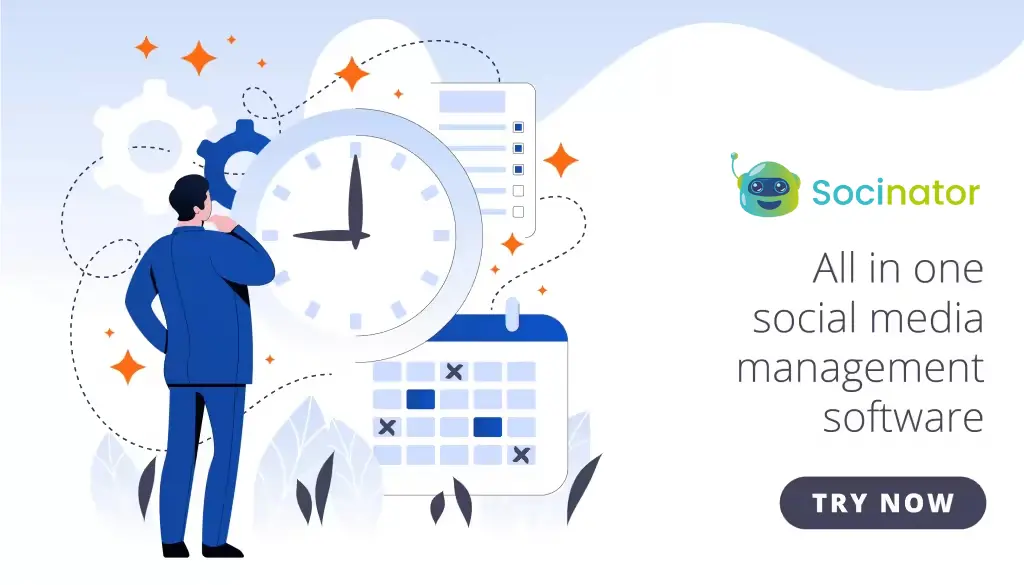You probably already know the headlines. Regulators have started hitting social platforms where it hurts, and people are no longer shrugging when a company slips up. Remember when Ireland’s data watchdog fined LinkedIn €310 million over how it used members’ data for ads? That was a loud wake-up call for anyone who treats data handling as an afterthought.
If you run social channels, that kind of news matters. It changes how users behave, how platforms operate, and how regulators look at marketing teams. And if your team posts, runs ads, or uses audience data without a clear data privacy playbook, you’re betting your brand on a gamble you can lose.
Why Privacy Actually Matters For Social Media And Marketing?
Privacy isn’t just legal paperwork. It affects trust, engagement, paid media efficiency, and the whole brand experience.
- People worry. Global research shows that roughly two-thirds of consumers are somewhat or very concerned about online privacy and must download a VPN to stay safe. That concern shapes what they share, who they follow, and whether they click on your ads.
- Consumers punish brands. Recent studies find that large shares of people will stop using or abandon brands after data privacy concerns. Protecting data now ties directly to retention and reputation.
- Regulators are active. Big fines and enforcement actions are a real risk. The EU’s data privacy enforcement has produced high-profile penalties for mishandled user data, showing governments will intervene when companies cross lines.
- Ads and targeting are changing. The ad ecosystem is moving toward privacy-first solutions, and platforms are testing new ways to balance targeting with user privacy. That shift means marketers need new tactics for audience building and measurement.
To put it bluntly: users, law, and platform shifts together make data privacy a marketing issue, not an IT-only problem.
How Ignoring Data Privacy Will Wreck Your Social Strategy?
Look, fines are bad. But the real damage is subtle and slow.
Trust erodes first. People stop sharing and stop clicking, especially when they sense weak data privacy practices. Organic reach drops because the signal that makes content spread is gone. You put more money behind posts to make up for it. It’s a treadmill.
Reputation damage is the gift that keeps on giving. A leak or an offhand data slip will show up on search and on screenshots people keep sharing. Damage control costs time, energy, and credibility. You can fix a broken campaign. It is much harder to fix a broken relationship with your audience.
Ad performance tanks when identifiers dry up or when your data is unreliable. You’ll burn budget testing audiences that look right on a spreadsheet but don’t convert. Meanwhile, partners and agencies start pointing fingers.
And finally, operations get noisy. A single incident means audits, emergency freezes, and handoffs to legal. That means no more strategic planning for a bit. Momentum dies. New launches get postponed. It’s a slow bleed.
What A Privacy-Aware Social-Media Strategy Actually Looks Like?
Data privacy is built into how you plan, not tacked on at the end.
Start small. Ask fewer questions on lead forms. Keep DMs out of spreadsheets unless you need them there. If an influencer asks for a list of followers, stop and think who owns that data and why. Make consent readable. No legalese. Plain sentences win.
Secure the basics. Use single sign-on for social tools. Enforce unique admin accounts. Two-factor auth should be non-negotiable. Treat audience lists like cash: don’t leave them lying around in shared drives where data privacy can be compromised.
Design experiments with anonymised cohorts first. If you can prove an idea with aggregated signals, do that. Use individual-level data only when the business case is clear and documented.
Name ownership. Who signs off on a new social integration? Who verifies that a partner won’t export data? Give the tasks to people, not titles, and require one quick checklist before anything goes live.
Make user rights easy. If someone asks for their data, your community manager should know exactly where to click and who to notify. Don’t make people wait or fill long forms. That’s how trust frays.
Finally, bake privacy into the creative cycle. Every campaign brief should have a data privacy check. It takes two minutes and it prevents stupid mistakes.
Tactical Steps: How To Implement This Inside Your Team?
 You do not need a 40-page policy to start. You need a plan you can execute this week.
You do not need a 40-page policy to start. You need a plan you can execute this week.
- Audit where data lives. Look at forms, DMs, spreadsheets, ad audiences, influencer handovers, and any app that can export lists. Most teams find surprises here.
- Draw the path. Capture, storage, use, sharing, deletion. Draw it on a whiteboard. Put post-it notes where third parties touch the data.
- Highlight the risks. Third-party social apps and old backups are usually top risk items and major data privacy liabilities. Focus there first.
- Make short, usable playbooks. Not long documents. One-page guides for community managers and ad ops. Example: “What to do when a follower asks for deletion.”
- Train the team with examples. Show a misconfigured form or a botched upload. Make it real and short. People remember stories better than rules.
- Choose tech that helps, not hinders. Role-based access, encrypted storage for lists, and consent management tools for lead forms. Use systems that give you logs and audit trails.
- Track a few privacy KPIs. Response time for data requests. Number of third-party app permissions. Number of exported lists. You don’t need 50 metrics. A handful keeps you honest.
- Review quarterly. Regulations change, platform APIs change, and your partner stack expands. A quarterly check keeps surprises low.
Do it in this order and you’ll cut the biggest risks fast.
Tools And Tech Worth Considering
You do not need every shiny tool. Pick the ones that fix your real issues.
- A consent manager for forms so people see exactly what they are signing up for.
- A social dashboard with audit logs and role controls.
- Encrypted storage for audience lists and a clear export policy.
- Data-clean room options for measurement when you need to match audiences without handing over raw PII.
- Regular vulnerability scans for apps connected to social accounts.
- A simple incident response template for social comms; pre-approved lines save days.
Those tools do the work, but they are not magical. Governance and consistent habits matter more than a tool you only use once.
Benefits: Why This Matters Beyond Compliance?
You’re not just avoiding fines. You get strategic upside from stronger data privacy built into your workflows.
- Trust is a revenue driver. Trust helps people engage and buy. People share more valuable info with brands they trust.
- Better data quality. Voluntary, consented first-party data tends to be cleaner and more predictive than scraped or bought lists.
- Lower long-term cost. Prevention costs less than breach cleanup. The global average cost of a data breach increased significantly in recent years, illustrating the price of getting it wrong.
- Competitive differentiation. Brands that communicate clear data privacy values stand out in crowded feeds.
Biggest Pitfalls And How To Avoid Them
- Checkbox compliance. Policies that live in a folder do nothing. Make data privacy part of everyday creative review.
- Blind trust in platform defaults. Platforms change data privacy defaults and APIs. Monitor announcements and adapt.
- Third-party weak links. Audit connections and remove unused apps.
- Global rule confusion. Running campaigns in many countries? Map regulatory differences before you launch.
- Over-personalisation temptation. You can still deliver targeted value without hoarding personal data. Use cohorts, contextual targeting, and first-party signals.
Future Trends To Watch
Privacy enforcement and fines will likely keep growing. That changes how budgets are allocated and how risk is priced.
Advertising will lean more on first-party data and contextual signals. Cookieless methods will be the norm, not the experiment.
AI will make personalization easier and creepier at the same time. Good governance and clear ethical rules will be the deciding factor for brand trust.
And user expectations will rise. Younger audiences will expect control and transparency. Brands that meet those expectations win. Brands that ignore them lose.
Bottom Line
Data privacy is not a checkbox or a legal-only problem. It touches creative, community, paid media, and brand trust. Make privacy a planning filter for every campaign. Map and minimise data, lock down access, be transparent, and measure privacy like you measure conversions. Do that and your social work will be safer, less disruptive, and more effective.
FAQs
Will privacy-first social marketing mean my ads will perform worse?
Not necessarily. You may lose some precision from third-party identifiers, but you gain cleaner first-party signals and better user goodwill. Use a mix: context, first-party audiences, and privacy-safe measurement.
Do I need a lawyer to build a privacy-aware social plan?
You do need legal input for jurisdictional compliance and policy wording, but much of the everyday work is operational and can be run by marketing plus privacy or security partners.
What’s the single fastest win for social teams?
Lock down account access: unique admin accounts, SSO, 2FA, and remove dormant backup logins. That removes a huge chunk of accidental risk.
How often should we audit third-party apps connected to our social accounts?
At least quarterly, and always before big campaign launches or when onboarding new partners.
If we collect less data, will we still be able to personalize?
Yes. Good personalization comes from a mix of first-party signals, contextual cues, and smart creative. Quality beats quantity.






